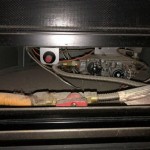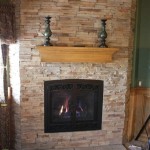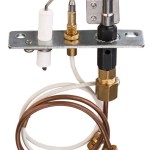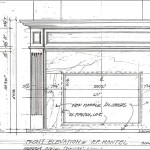Fireplace Stone Designs: A Comprehensive Guide
Fireplaces have long served as focal points in homes, providing warmth, ambiance, and a sense of gathering. While the function remains constant, the aesthetics of fireplaces have evolved significantly, with stone designs emerging as a popular choice for their natural beauty, durability, and versatility. Understanding the various stone options and design principles is crucial for achieving a fireplace that complements the overall style of a living space.
The selection of stone for a fireplace is not merely a cosmetic decision; it also impacts the fireplace's performance and longevity. Different types of stone possess varying heat resistance, porosity, and ease of maintenance. Therefore, a thorough understanding of the properties of each stone type is essential before embarking on a fireplace renovation or construction project.
Key Considerations Before Choosing a Fireplace Stone Design
Several factors warrant careful consideration before selecting a specific stone design for a fireplace. These encompass the overall aesthetic of the room, the desired level of maintenance, the budget, and the structural requirements of the fireplace itself. Ignoring these considerations can lead to dissatisfaction with the final outcome and potentially costly rectifications.
The existing architectural style of the room plays a pivotal role in determining the appropriate stone design. A rustic cabin, for example, might benefit from a rough-hewn fieldstone fireplace, while a modern minimalist living room calls for a sleek, linear design using materials like polished granite or marble. Harmonizing the fireplace with the surrounding decor is key to creating a cohesive and aesthetically pleasing environment.
Different types of stone require varying levels of maintenance. Some stones, like slate and granite, are relatively non-porous and easy to clean, while others, such as sandstone and limestone, are more prone to staining and require periodic sealing. Individuals who prefer low-maintenance options should prioritize denser, less porous stones. This is especially important for fireplaces that are frequently used, as soot and ash can accumulate and be challenging to remove from porous surfaces.
The budget allocated to the project also influences the selection of stone. Natural stone can range significantly in price, depending on its rarity, origin, and processing. Manufactured stone veneers offer a more affordable alternative, providing the look and texture of natural stone at a lower cost. However, it's crucial to assess the quality of manufactured stone to ensure its durability and aesthetic appeal over time.
The structural integrity of the fireplace and the surrounding wall must be considered. Natural stone is heavy, and the existing structure needs to be able to support the added weight. In some cases, reinforcement may be necessary, adding to the overall cost of the project. Consulting with a qualified structural engineer is advisable, especially for older homes or when using heavy stone materials.
Popular Types of Stone for Fireplace Designs
The market offers a diverse array of stone options for fireplace designs, each possessing unique characteristics and aesthetic qualities. Understanding the nuances of each type allows for a more informed decision-making process, ensuring the selection aligns with both design preferences and practical requirements.
Fieldstone, characterized by its irregular shapes and rustic texture, is a popular choice for creating a natural and earthy ambiance. Its rugged appearance lends itself well to traditional and country-style homes. Fieldstone is typically sourced locally, making it a cost-effective option in certain regions. However, its irregular shape can make installation more labor-intensive.
Ledgestone, comprised of thin, stacked pieces of stone, offers a contemporary and textured look. Its linear pattern adds visual interest without overwhelming the space. Ledgestone is available in a variety of colors and materials, including granite, slate, and quartzite. Its relatively thin profile makes it suitable for applications where space is limited.
River rock, smooth and rounded stones formed by the action of moving water, provides a unique and organic aesthetic. Its natural variations in color and texture create a visually appealing focal point. River rock is typically used in more informal settings and can be particularly effective in creating a coastal or nature-inspired design. However, its uneven surface can make cleaning more challenging.
Marble, a metamorphic rock known for its elegant veining and polished surface, exudes sophistication and luxury. Its timeless appeal makes it a popular choice for high-end homes. Marble is available in a wide range of colors and patterns, allowing for customization to suit various design preferences. However, it is relatively soft and porous, making it susceptible to staining and etching.
Granite, an igneous rock prized for its durability and resistance to heat, is a practical and stylish option for fireplaces. Its speckled appearance adds depth and character to the design. Granite is available in a vast array of colors and patterns, making it suitable for both traditional and contemporary settings. Its non-porous nature makes it easy to clean and maintain.
Slate, a fine-grained metamorphic rock, offers a sleek and modern look. Its dark, muted tones create a sophisticated and understated ambiance. Slate is highly durable and resistant to heat, making it a practical choice for fireplaces. Its smooth surface is relatively easy to clean and maintain. However, its limited color options may not appeal to all design preferences.
Limestone, a sedimentary rock known for its soft, earthy tones, provides a warm and inviting atmosphere. Its natural variations in color and texture add character to the design. Limestone is relatively porous and requires periodic sealing to prevent staining. Its softer nature makes it more susceptible to scratching and chipping than other stone types.
Manufactured stone veneer, a lightweight alternative to natural stone, offers a cost-effective way to achieve the look of stone without the added weight and expense. It is available in a wide range of styles and colors, mimicking the appearance of various natural stone types. Manufactured stone veneer is typically easier to install than natural stone, but its durability and aesthetic appeal may not match that of natural stone.
Design Principles for Stone Fireplaces
Beyond the selection of stone type, adhering to sound design principles is crucial for creating a fireplace that is both aesthetically pleasing and functionally sound. These principles encompass factors such as scale, proportion, balance, and focal point creation.
The scale of the fireplace should be proportionate to the size of the room. A massive fireplace can overwhelm a small room, while a small fireplace can get lost in a large space. Careful consideration of the room's dimensions is essential for determining the appropriate size of the fireplace. A general rule of thumb is that the fireplace should be approximately one-third to one-half the width of the wall it occupies.
The proportions of the fireplace itself should also be visually balanced. The height of the firebox, the width of the surround, and the size of the mantel should all be in harmony with each other. Experimenting with different layouts and materials is advisable to achieve a pleasing aesthetic. Using visual aids, such as sketches or digital renderings, can be helpful in visualizing the final design.
The fireplace should serve as a natural focal point in the room. Its design should draw the eye and create a sense of visual interest. This can be achieved through the use of contrasting colors, textures, or architectural details. Adding decorative elements, such as artwork, sculptures, or plants, can further enhance the fireplace's role as a focal point.
The surrounding elements of the fireplace should complement its design. The wall color, flooring, and furniture should all work together to create a cohesive and harmonious environment. Avoid using colors or patterns that clash with the stone, as this can detract from the fireplace's overall aesthetic appeal. Consider the lighting in the room and how it will affect the appearance of the stone. Natural light can enhance the beauty of the stone, while artificial light can be used to create different moods and effects.
Finally, ensure that the fireplace design complies with all applicable building codes and safety regulations. This includes proper ventilation, fireproofing, and clearances from combustible materials. Consulting with a qualified contractor or building inspector is essential to ensure that the fireplace is safe and functional.

50 Sensational Stone Fireplaces To Warm Your Senses

Best Stone Fireplace Ideas
:strip_icc()/Screenshot2021-10-19at09-16-46Portfolio-AmyBartlamPhotography-1f35ea9ec29846779a2d62b42676eff9.png?strip=all)
20 Best Stone Fireplace Ideas

Natural Stacked Stone Veneer Fireplace Ideas

50 Sensational Stone Fireplaces To Warm Your Senses

27 Modern Stone Veneer Fireplace Ideas Stoneyard

65 Best Stone Fireplace Design Ideas

27 Modern Stone Veneer Fireplace Ideas Stoneyard

Best Stone Fireplace Ideas

Angie S Corner Fireplace Design With Stacked Stone Genstone








